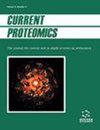Interaction of C-terminal Truncated Beta-amyloid Peptides with Human Serum Albumin
IF 0.5
4区 生物学
Q4 BIOCHEMICAL RESEARCH METHODS
引用次数: 0
Abstract
Background: The formation of plaque from protein fibrils is the major source of diseases, such as Alzheimer's and Prion diseases. Amyloid beta (Aβ) is a peptide with different lengths, which is one of the main components of the plaque in the brain of people with Alzheimer's. Of the amyloid beta of various lengths in the brain cells plaque, beta-amyloid with 40 amino acids (Aβ1- 40) is more abundant than the rest. Aβ monomers are in a dynamic equilibrium of various conformations with beta sheets that aggregate as oligomers or larger structures. The misfolding of betaamyloid peptide is involved in its accumulation. On the other hand, various species that exist in the cell environment can affect the structure of beta-amyloid peptides. background: The accumulation of beta-amyloid peptide is one of the effective mechanisms in creating amyloid plaques in nerve cells. These plaques are responsible for causing Alzheimer's disease Aims: This study aimed to study the interaction of truncated forms of beta-amyloid peptide with human albumin serum protein. objective: Interaction of beta-amyloid peptide with other proteins is effective in causing Alzheimer's disease. These include interactions between beta-amyloid and cell surface proteins such as prions and extracellular proteins such as clusterins and human serum albumin (HSA). Because HSA concentrations are higher than other proteins, more than half of the interaction of beta-amyloid with proteins is related to interaction with this protein. Interaction of HSA with beta-amyloid somewhat reduces the aggregation of beta amyloid. However, due to the diversity of beta-amyloid peptides with different lengths, the mechanism of their interaction with HSA has not been well understood. In this work, the interaction of C-terminal truncated beta-amyloid peptides with HSA has been investigated. Objective: Interaction of beta-amyloid peptide with other proteins is effective in causing Alzheimer's disease. These include interactions between beta-amyloid and cell surface proteins, such as prions and extracellular proteins, such as clusterins and human serum albumin (HSA). As HSA concentrations are higher than other proteins, more than half of the interaction of beta-amyloid with proteins is related to interaction with this protein. Interaction of HSA with beta-amyloid reduces the aggregation of beta-amyloid. However, due to the diversity of beta-amyloid peptides with different lengths, the mechanism of their interaction with HSA has not been well understood. In this work, the interaction of C-terminal truncated beta-amyloid peptides with HSA has been investigated. Method: The C-terminal truncated forms of beta-amyloid peptides, Aβ1 − 26, Aβ1 − 30, and Aβ1 − 36 and Aβ1 − 40, were designed in silico. Docking between these truncated peptides was performed with serum albumin. A molecular dynamics simulation of the interaction of designed peptides with serum albumin was also performed. Results and Discussion: The results showed that Aβ1 − 26 and Aβ1 − 30 peptides interact with the interfacial region of the chains A and B of HSA and the surface of the HSA. While the interaction of Aβ1 − 36 and Aβ1 − 40 peptides occurs only with the HSA surface. On the other hand, the interaction of peptides with chain A of HSA is more favorable than their interaction with chain B of HSA. Also, as the length of the peptide increases, the number of residues involved in the hydrophobic interaction increases. The results of molecular dynamics simulation confirm the results obtained from docking. Conclusion: The results of molecular dynamics and docking simulations show that the binding affinity of peptides to serum albumin decreases with peptide shortening. Also, by changing the structure of beta-amyloid peptides, serum albumin reduces their tendency to aggregate. other: nonec端截断β -淀粉样肽与人血清白蛋白的相互作用
背景:蛋白原纤维形成斑块是阿尔茨海默病和朊病毒病等疾病的主要来源。淀粉样蛋白(a β)是一种长度不同的肽,是阿尔茨海默病患者大脑斑块的主要成分之一。在脑细胞斑块中不同长度的β淀粉样蛋白中,含有40个氨基酸的β淀粉样蛋白(Aβ1- 40)比其他淀粉样蛋白含量高。a - β单体处于各种构象的动态平衡状态,β片聚集成低聚物或更大的结构。β淀粉样肽的错误折叠参与了其积累。另一方面,存在于细胞环境中的各种物种可以影响β -淀粉样肽的结构。背景:β -淀粉样肽的积累是神经细胞中产生淀粉样斑块的有效机制之一。这些斑块是导致阿尔茨海默病的原因目的:本研究旨在研究截断形式的β -淀粉样肽与人白蛋白血清蛋白的相互作用。目的:β -淀粉样蛋白肽与其他蛋白的相互作用是引起阿尔茨海默病的有效途径。这包括β -淀粉样蛋白与细胞表面蛋白(如朊病毒)和细胞外蛋白(如聚簇蛋白和人血清白蛋白)之间的相互作用。由于HSA浓度高于其他蛋白质,因此β -淀粉样蛋白与蛋白质的相互作用有一半以上与该蛋白质的相互作用有关。HSA与β -淀粉样蛋白的相互作用在一定程度上减少β -淀粉样蛋白的聚集。然而,由于长度不同的β -淀粉样肽的多样性,它们与HSA相互作用的机制尚未得到很好的理解。在这项工作中,研究了c端截断的β -淀粉样肽与HSA的相互作用。目的:β -淀粉样肽与其他蛋白的相互作用在阿尔茨海默病的发病中起重要作用。这些包括β -淀粉样蛋白和细胞表面蛋白(如朊病毒)和细胞外蛋白(如聚簇蛋白和人血清白蛋白)之间的相互作用。由于HSA浓度高于其他蛋白质,因此β -淀粉样蛋白与蛋白质的相互作用有一半以上与该蛋白质的相互作用有关。HSA与β -淀粉样蛋白的相互作用可减少β -淀粉样蛋白的聚集。然而,由于长度不同的β -淀粉样肽的多样性,它们与HSA相互作用的机制尚未得到很好的理解。在这项工作中,研究了c端截断的β -淀粉样肽与HSA的相互作用。方法:用计算机设计β -淀粉样肽c端截断形式Aβ1−26、Aβ1−30、Aβ1−36和Aβ1−40。将这些截断的肽与血清白蛋白对接。设计的肽与血清白蛋白相互作用的分子动力学模拟也进行了。结果与讨论:结果表明,A - β1−26和A - β1−30肽与HSA的A链和B链的界面区域以及HSA的表面相互作用。而a - β1−36和a - β1−40肽的相互作用只发生在HSA表面。另一方面,肽与HSA A链的相互作用比与HSA B链的相互作用更有利。此外,随着肽长度的增加,参与疏水相互作用的残基数量也增加。分子动力学模拟结果证实了对接的结果。结论:分子动力学和对接模拟结果表明,肽与血清白蛋白的结合亲和力随着肽的缩短而降低。此外,通过改变β -淀粉样肽的结构,血清白蛋白减少了它们聚集的倾向。其他:无
本文章由计算机程序翻译,如有差异,请以英文原文为准。
求助全文
约1分钟内获得全文
求助全文
来源期刊

Current Proteomics
BIOCHEMICAL RESEARCH METHODS-BIOCHEMISTRY & MOLECULAR BIOLOGY
CiteScore
1.60
自引率
0.00%
发文量
25
审稿时长
>0 weeks
期刊介绍:
Research in the emerging field of proteomics is growing at an extremely rapid rate. The principal aim of Current Proteomics is to publish well-timed in-depth/mini review articles in this fast-expanding area on topics relevant and significant to the development of proteomics. Current Proteomics is an essential journal for everyone involved in proteomics and related fields in both academia and industry.
Current Proteomics publishes in-depth/mini review articles in all aspects of the fast-expanding field of proteomics. All areas of proteomics are covered together with the methodology, software, databases, technological advances and applications of proteomics, including functional proteomics. Diverse technologies covered include but are not limited to:
Protein separation and characterization techniques
2-D gel electrophoresis and image analysis
Techniques for protein expression profiling including mass spectrometry-based methods and algorithms for correlative database searching
Determination of co-translational and post- translational modification of proteins
Protein/peptide microarrays
Biomolecular interaction analysis
Analysis of protein complexes
Yeast two-hybrid projects
Protein-protein interaction (protein interactome) pathways and cell signaling networks
Systems biology
Proteome informatics (bioinformatics)
Knowledge integration and management tools
High-throughput protein structural studies (using mass spectrometry, nuclear magnetic resonance and X-ray crystallography)
High-throughput computational methods for protein 3-D structure as well as function determination
Robotics, nanotechnology, and microfluidics.
 求助内容:
求助内容: 应助结果提醒方式:
应助结果提醒方式:


